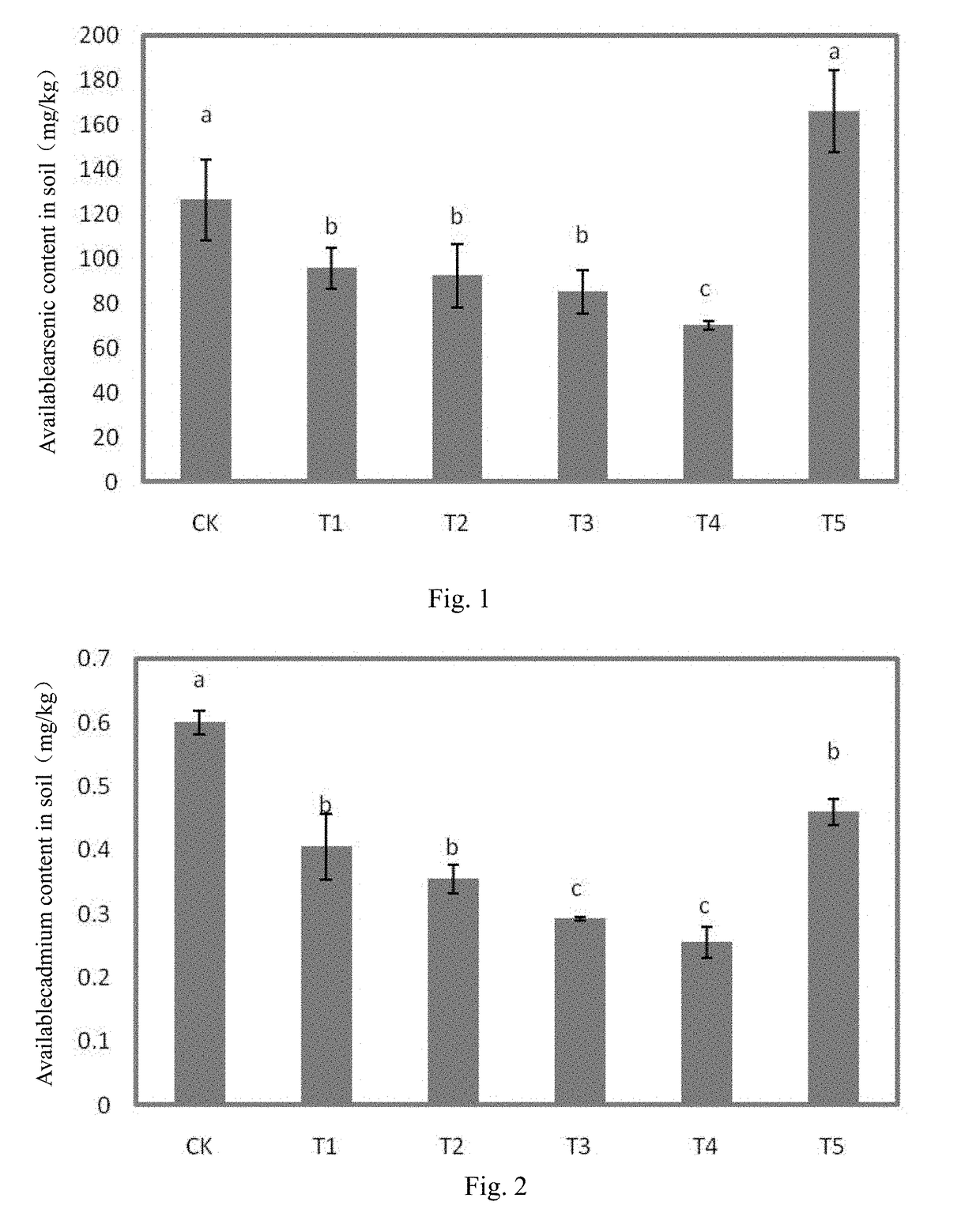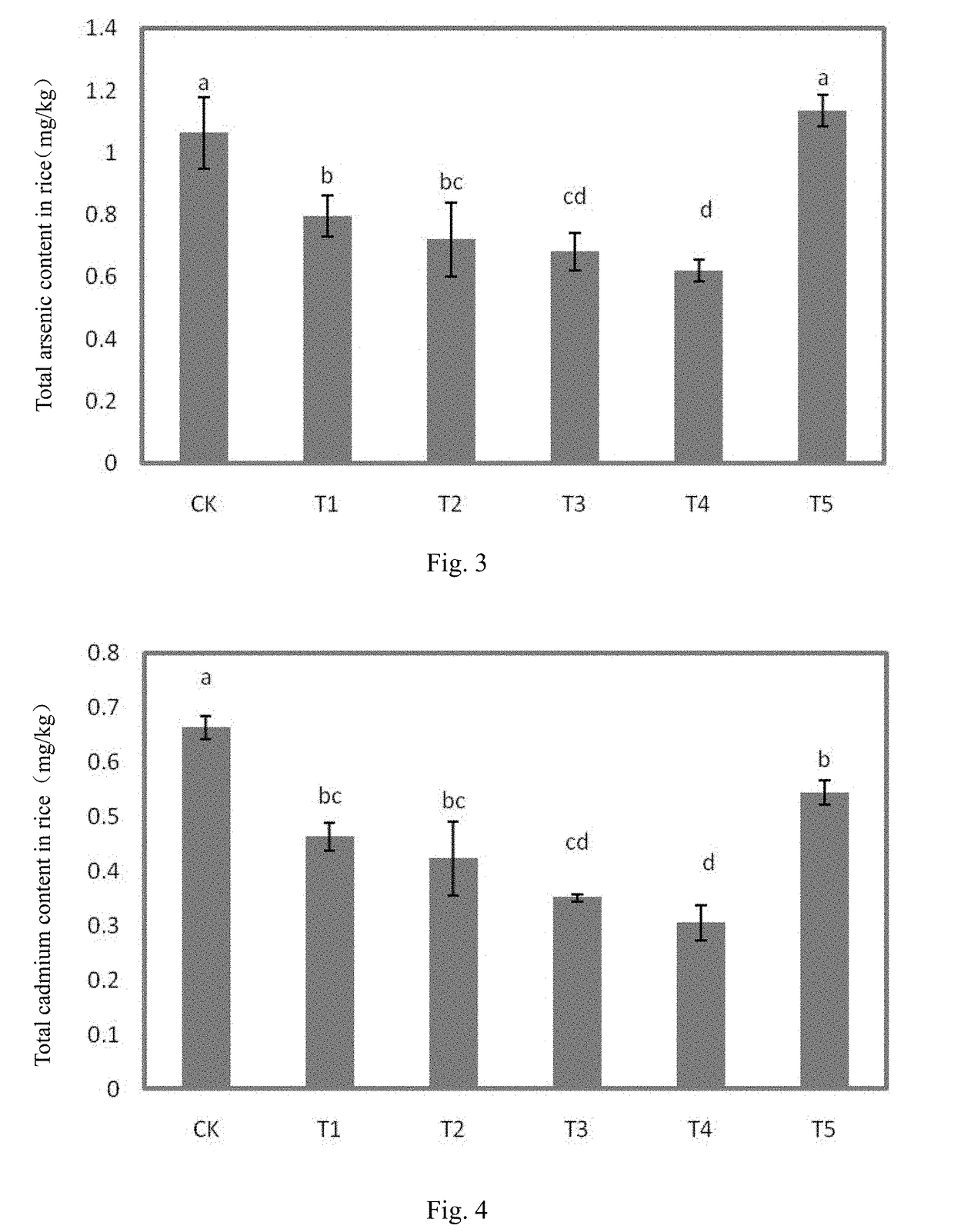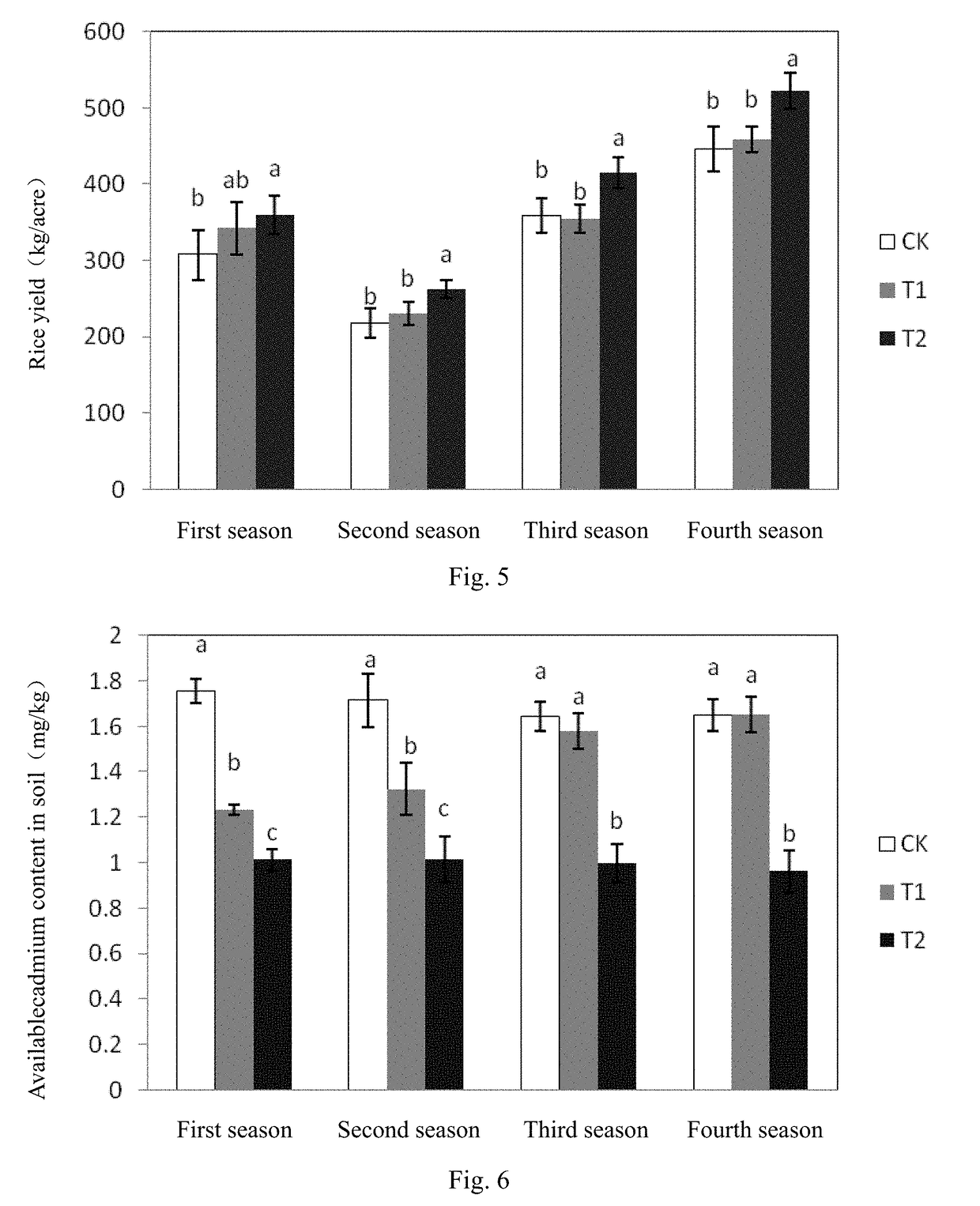Preparation and use of slow-release iron-based biochar soil heavy metal passivator
a biochar and passivating technology, applied in soil conditioning compositions, applications, agriculture tools and machines, etc., can solve the problems of direct economic losses of more than 20 billion yuan, difficult to use a single repair technology to solve problems, and the addition of biochar to soils is not necessarily to control bioavailability, so as to achieve effective passivating of heavy metals, save materials and manpower, and convenient to apply
- Summary
- Abstract
- Description
- Claims
- Application Information
AI Technical Summary
Benefits of technology
Problems solved by technology
Method used
Image
Examples
example 2
Preparation of Slow-Release Iron-Based Biochar Soil Heavy Metal Passivator from Sawdust as Raw Material
[0056]99 kg of dried sawdust is weighed, placed in a high-temperature furnace; the temperature is increased to 800° C. under the conditions of isolation at a rate of 10° C. / min, and heating is performed at this temperature for 3 h, and then the heating is stopped. 20 L of a ferric nitrate solution with an iron content of 5% by mass is prepared and quickly added into a high temperature furnace and maintained at a temperature of 350° C. by heating while stirring, followed by cooling, drying in the air, crushing and passing through a 60-mesh sieve to obtain the iron-based biochar with an iron mass fraction of 1%. The iron-based biochar, kaolin and cassava flour are mixed at a mass ratio of 100:5:10, sprayed with water to a 80% water content, granulated and dried to obtain the iron-based biochar core material with a particle size of 4±0.5 mm.
[0057]Additionally, 4.5 g of chitosan is dis...
example 3
Preparation of Slow-Release Iron-Based Biochar Soil Heavy Metal Passivator for Soil with Mixed Material as Raw Material
[0059]Dried sawdust, straws and palm fibres are mixed until uniform and crushed, and 97.5 kg is weighed, placed in a high-temperature furnace; the temperature is increased to 550° C. under the conditions of isolation at a rate of 10° C. / min, and heating is performed at this temperature for 5 h, and then the heating is stopped. 500 L of a ferric chloride solution with an iron content of 0.5% by mass is prepared and quickly added into a high temperature furnace and maintained at a temperature of 550° C. by heating while stirring, followed by cooling, drying in the air, crushing and passing through a 60-mesh sieve to obtain the iron-based biochar with an iron mass fraction of 2.5%. The iron-based biochar, kaolin and potato flour are mixed at a mass ratio of 100:5:10, sprayed with water to a 50% water content, granulated and dried to obtain the iron-based biochar core m...
example 4
Preparation of Slow-Release Iron-Based Biochar Soil Heavy Metal Passivator Using Palm Fibre as Raw Material
[0062]Rice palm fibres are dried in the air, and 95 kg is weighed and crushed, placed in a high-temperature furnace; the temperature is increased to 500° C. under the conditions of isolation at a rate of 10° C. / min, and heat is performed at this temperature for 3 h, and the heating is stopped. 200 L of a ferrous sulphate solution with an iron content of 2.5% by mass is prepared and quickly added into a high temperature furnace and maintained at a temperature of 150° C. by heating while stirring, followed by cooling, drying in the air, crushing and passing through a 60-mesh sieve to obtain the iron-based biochar with an iron mass fraction of 5%. The iron-based biochar, kaolin and sweet potato flour are mixed at a mass ratio of 100:1.5:3, sprayed with water to a 65% water content, granulated and dried to obtain the iron-based biochar core material with a particle size of 3.5±0.5 ...
PUM
| Property | Measurement | Unit |
|---|---|---|
| temperature | aaaaa | aaaaa |
| temperature | aaaaa | aaaaa |
| temperature | aaaaa | aaaaa |
Abstract
Description
Claims
Application Information
 Login to View More
Login to View More - R&D
- Intellectual Property
- Life Sciences
- Materials
- Tech Scout
- Unparalleled Data Quality
- Higher Quality Content
- 60% Fewer Hallucinations
Browse by: Latest US Patents, China's latest patents, Technical Efficacy Thesaurus, Application Domain, Technology Topic, Popular Technical Reports.
© 2025 PatSnap. All rights reserved.Legal|Privacy policy|Modern Slavery Act Transparency Statement|Sitemap|About US| Contact US: help@patsnap.com



